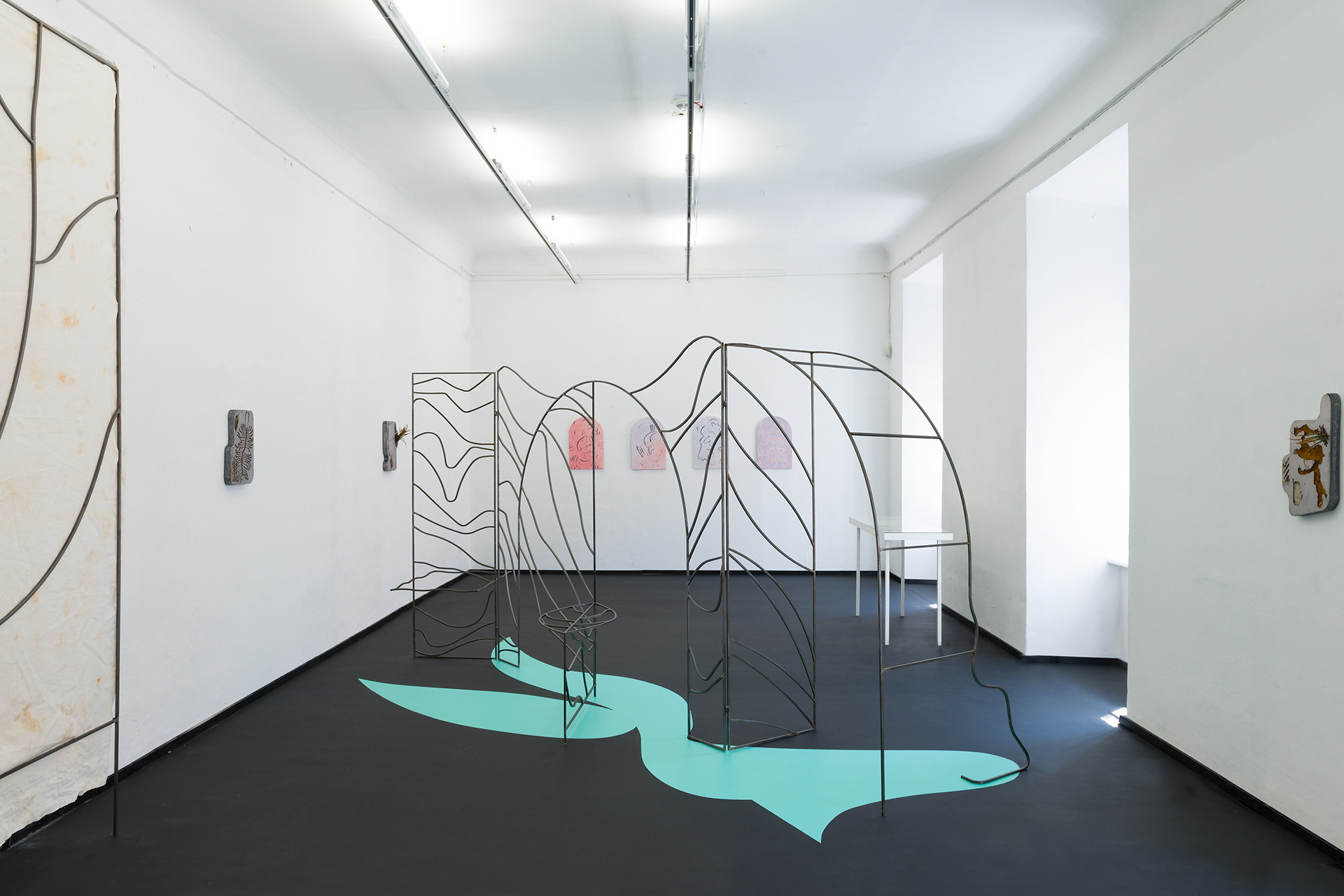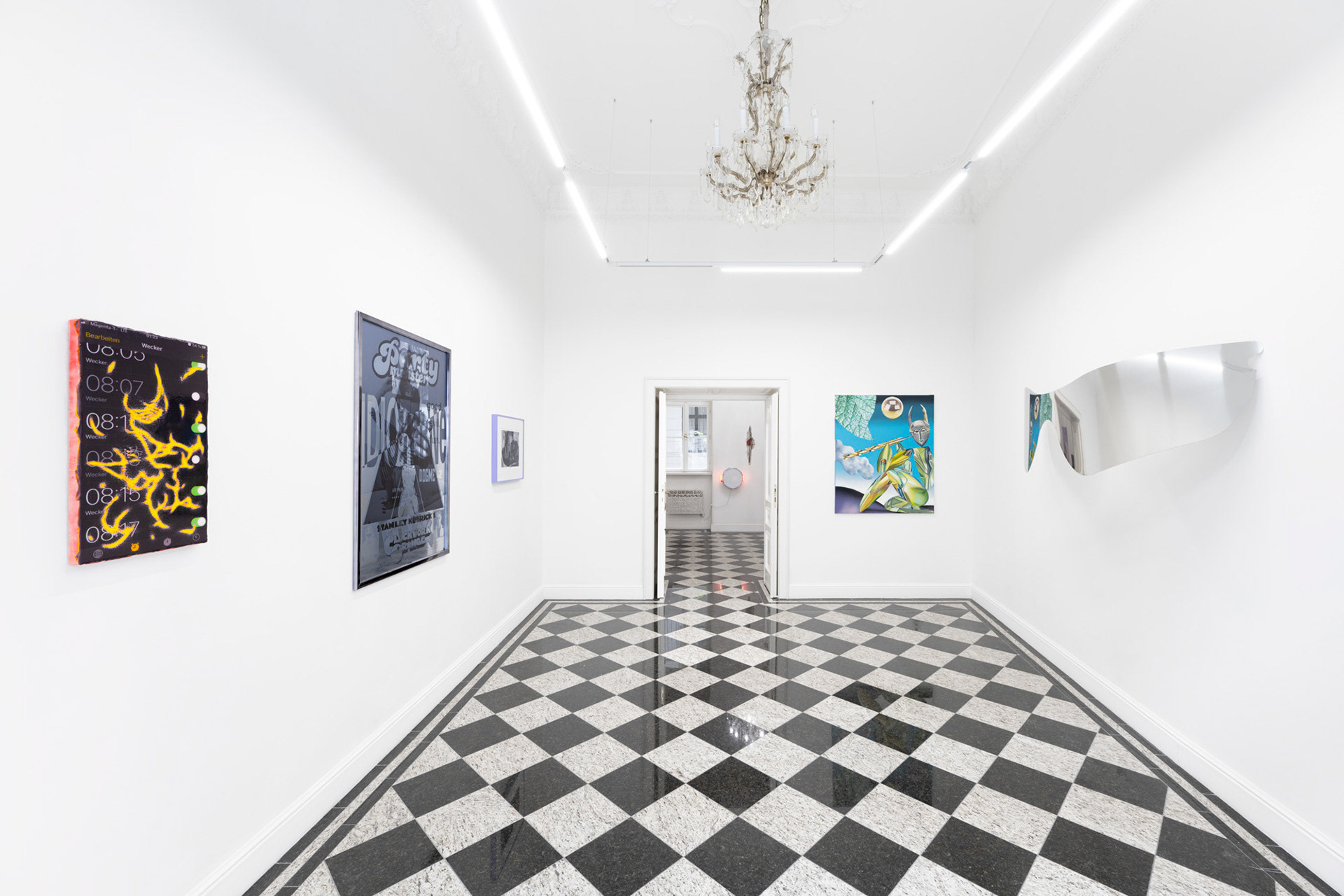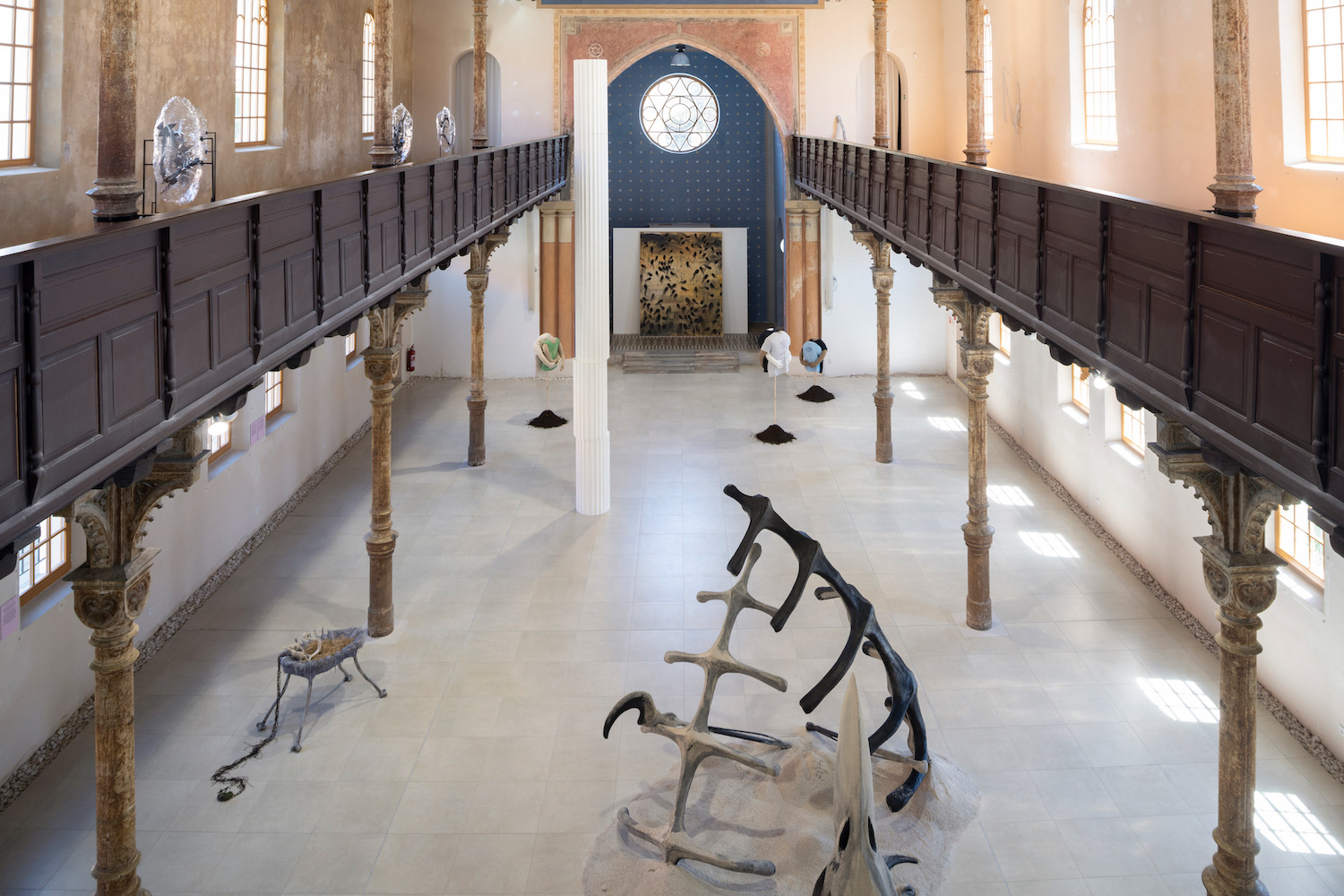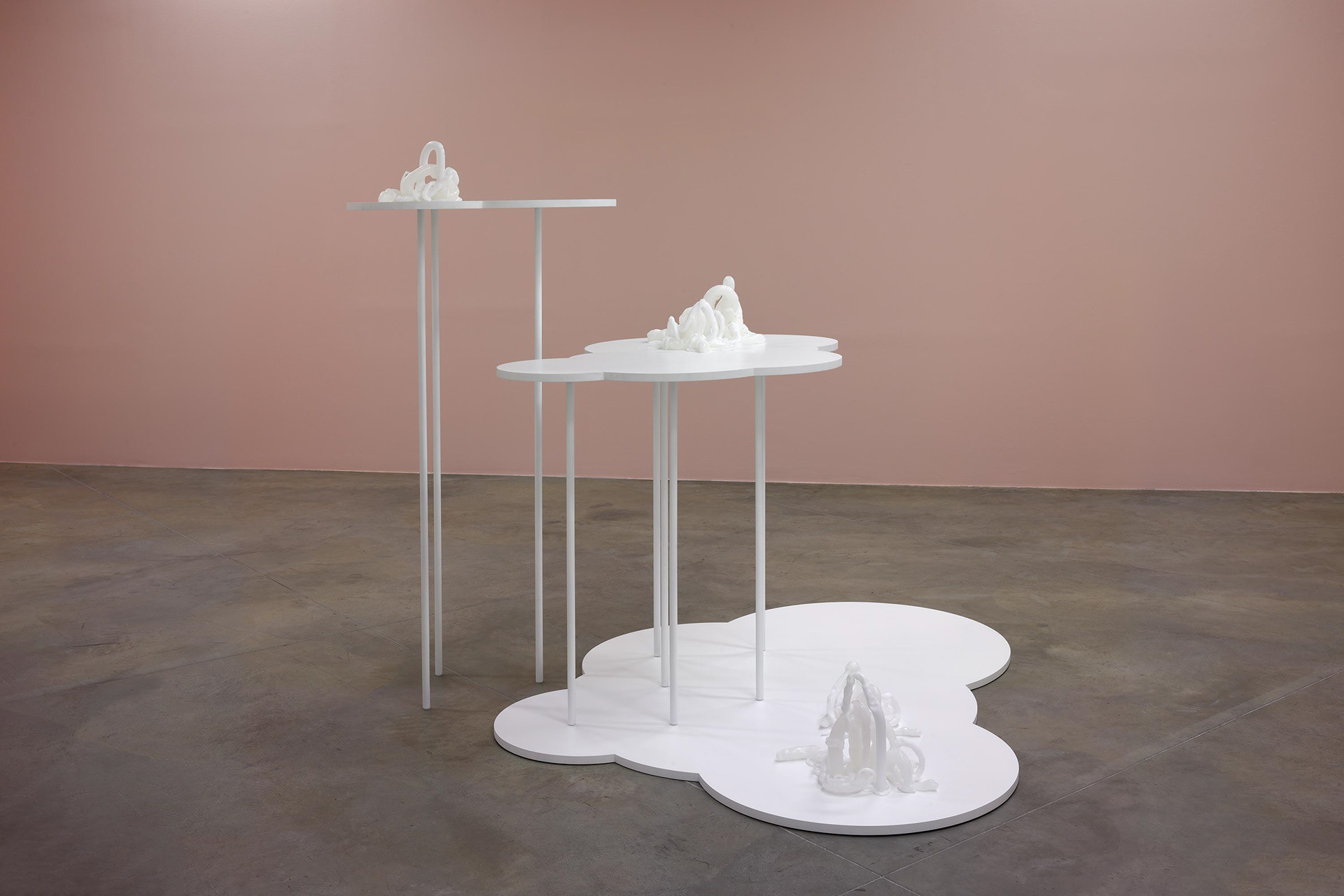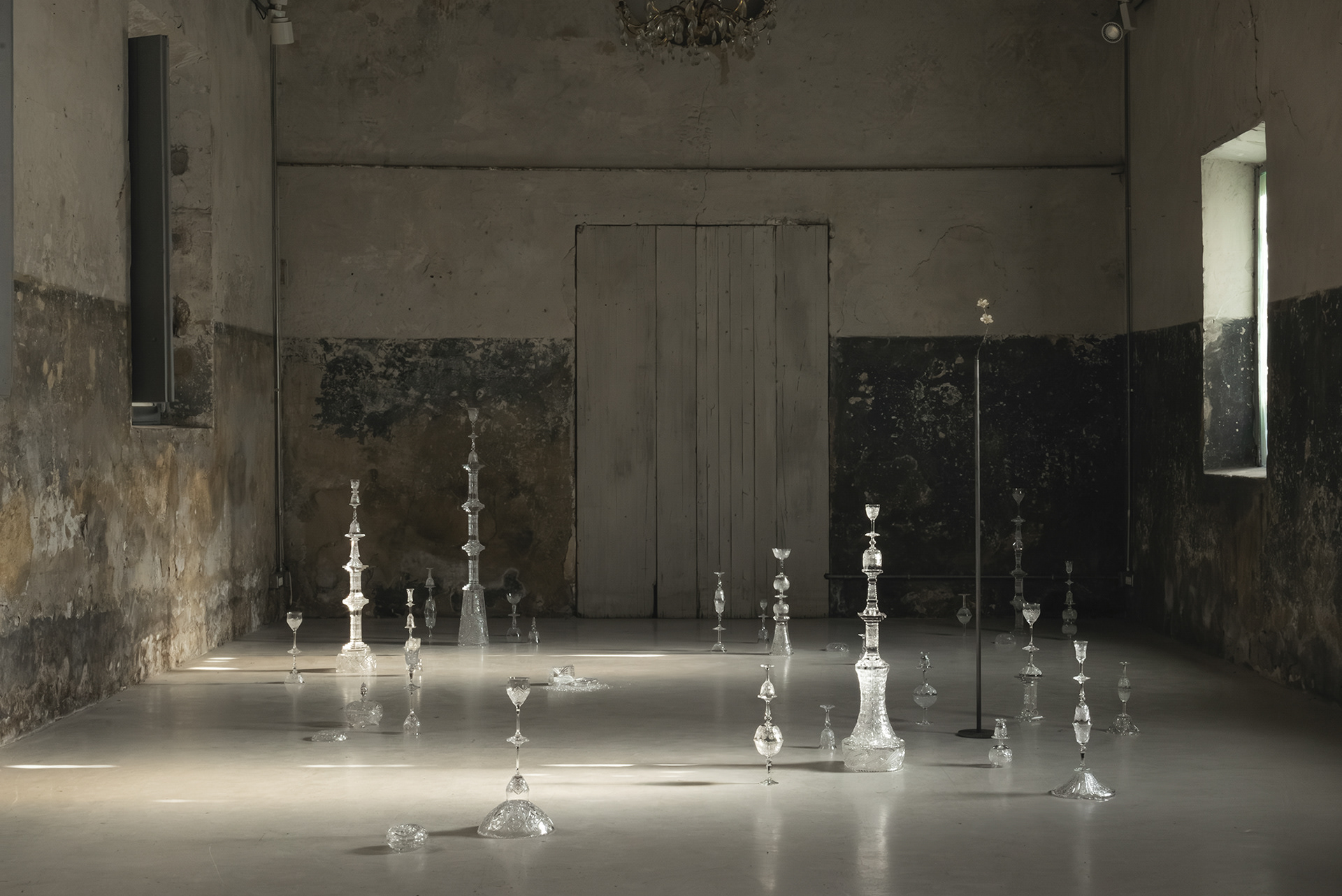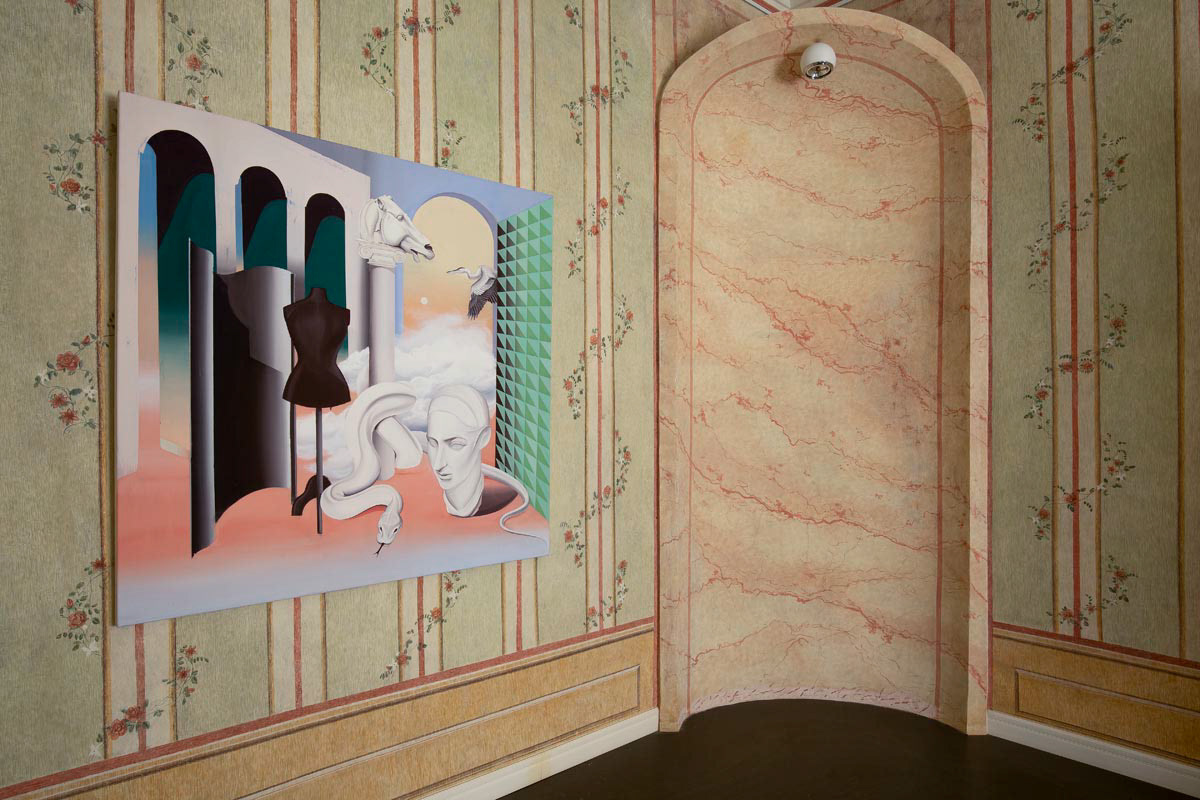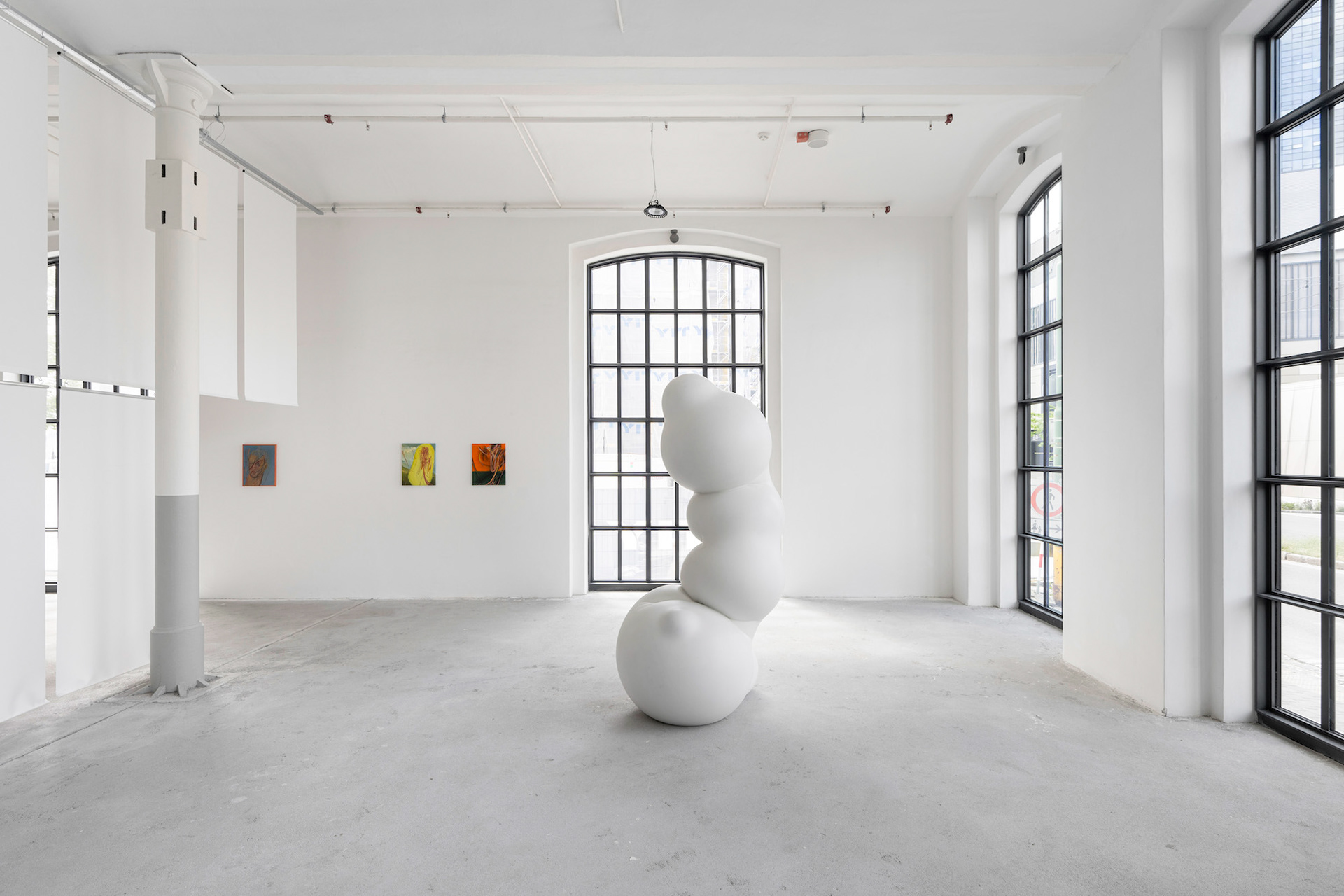

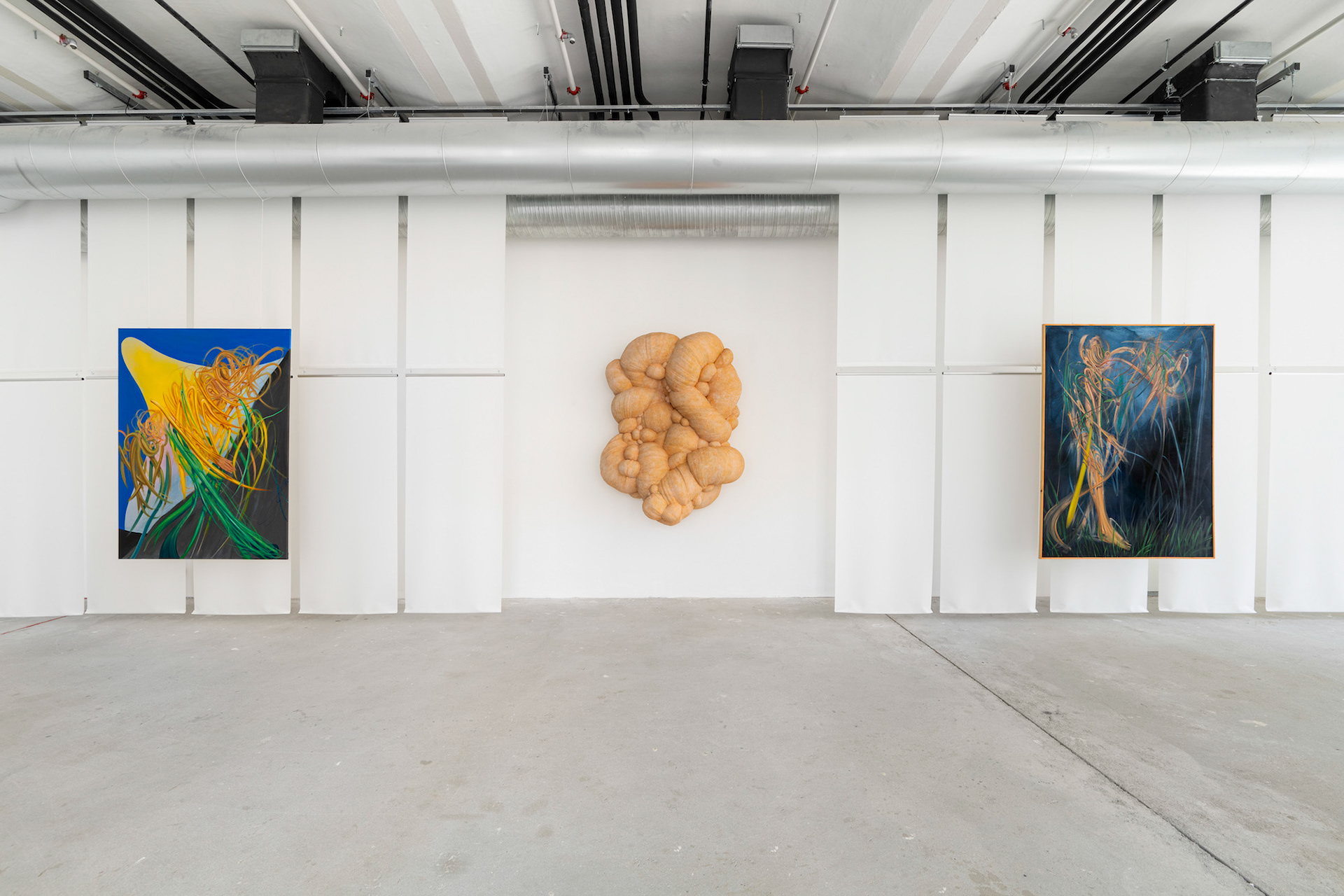
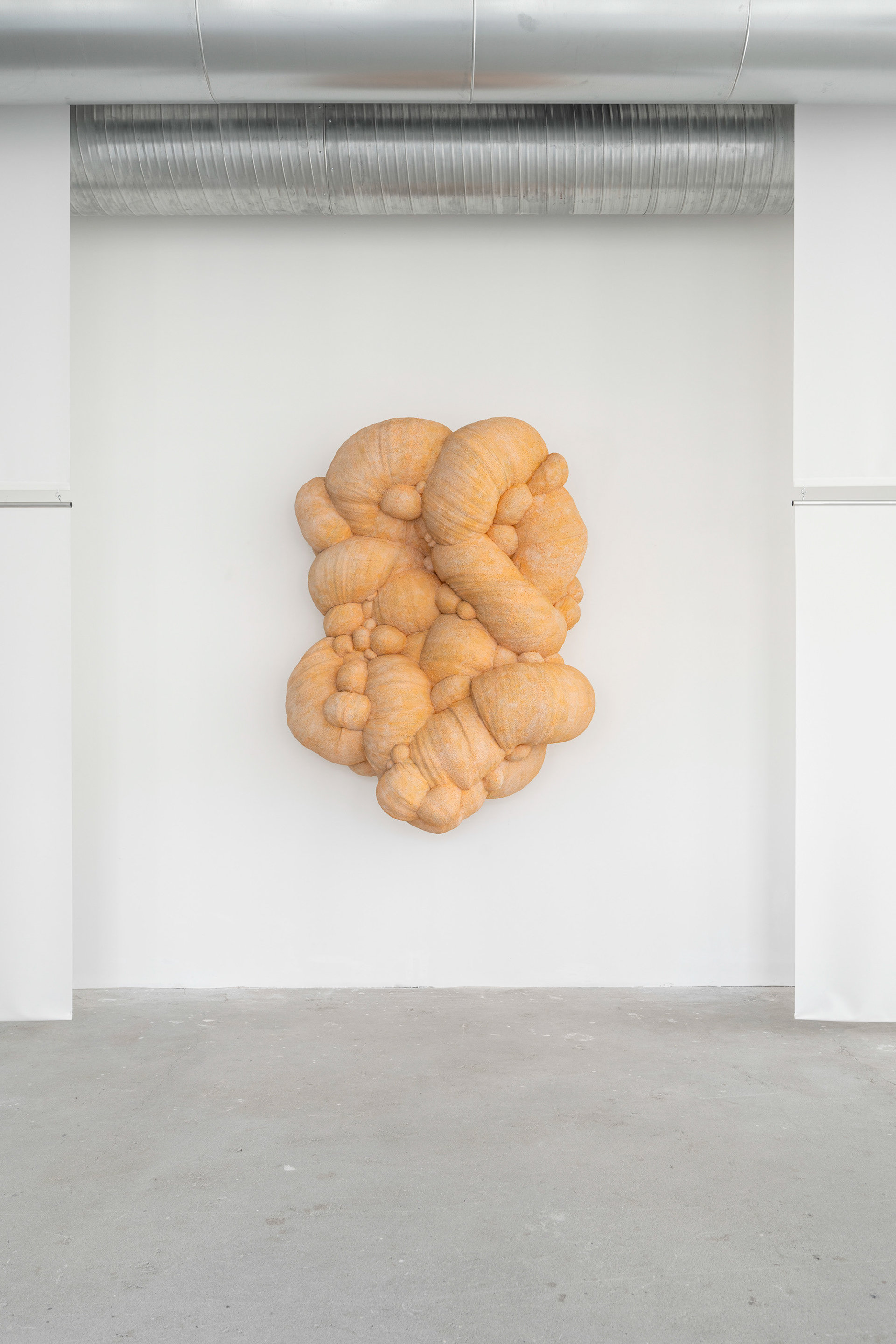






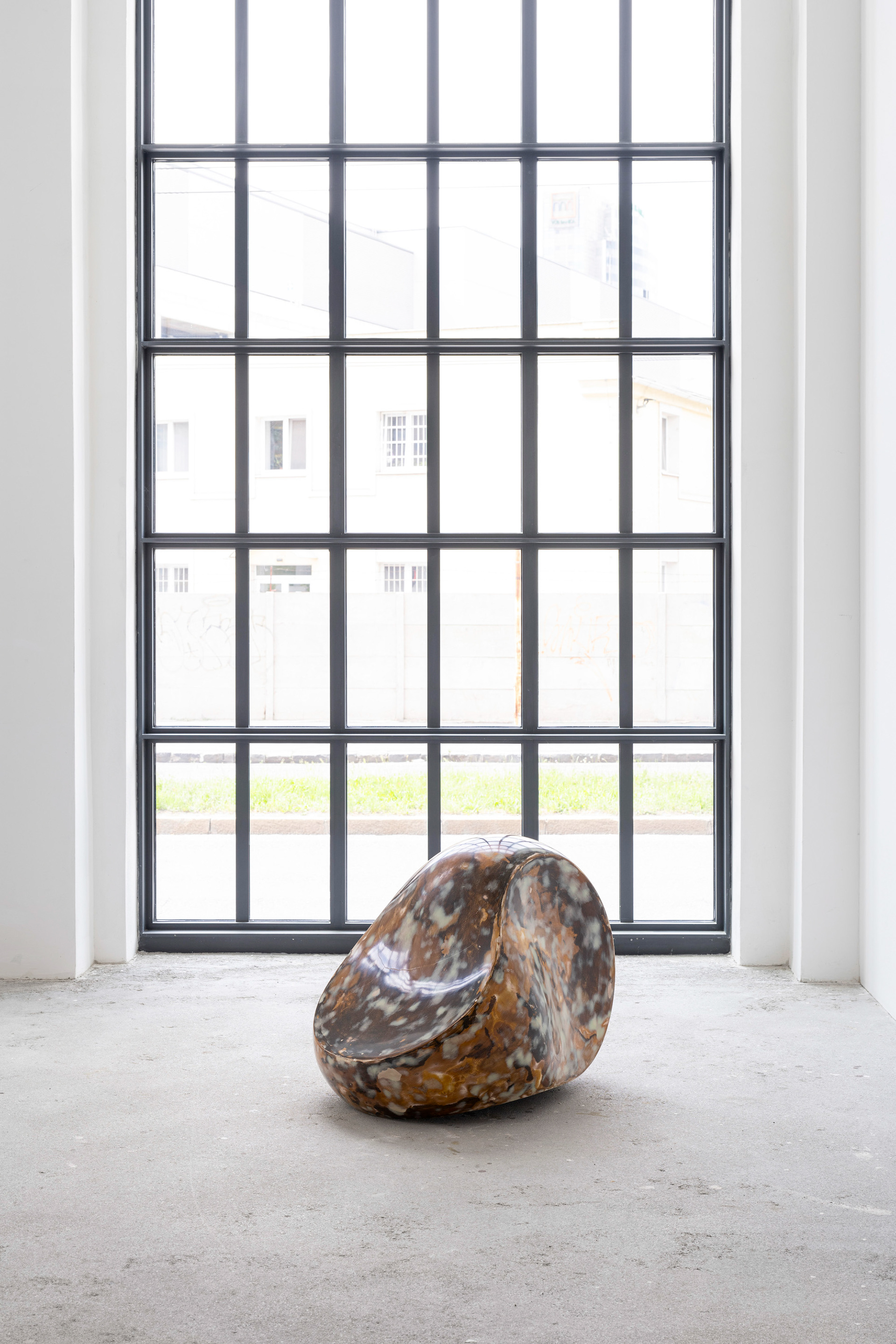


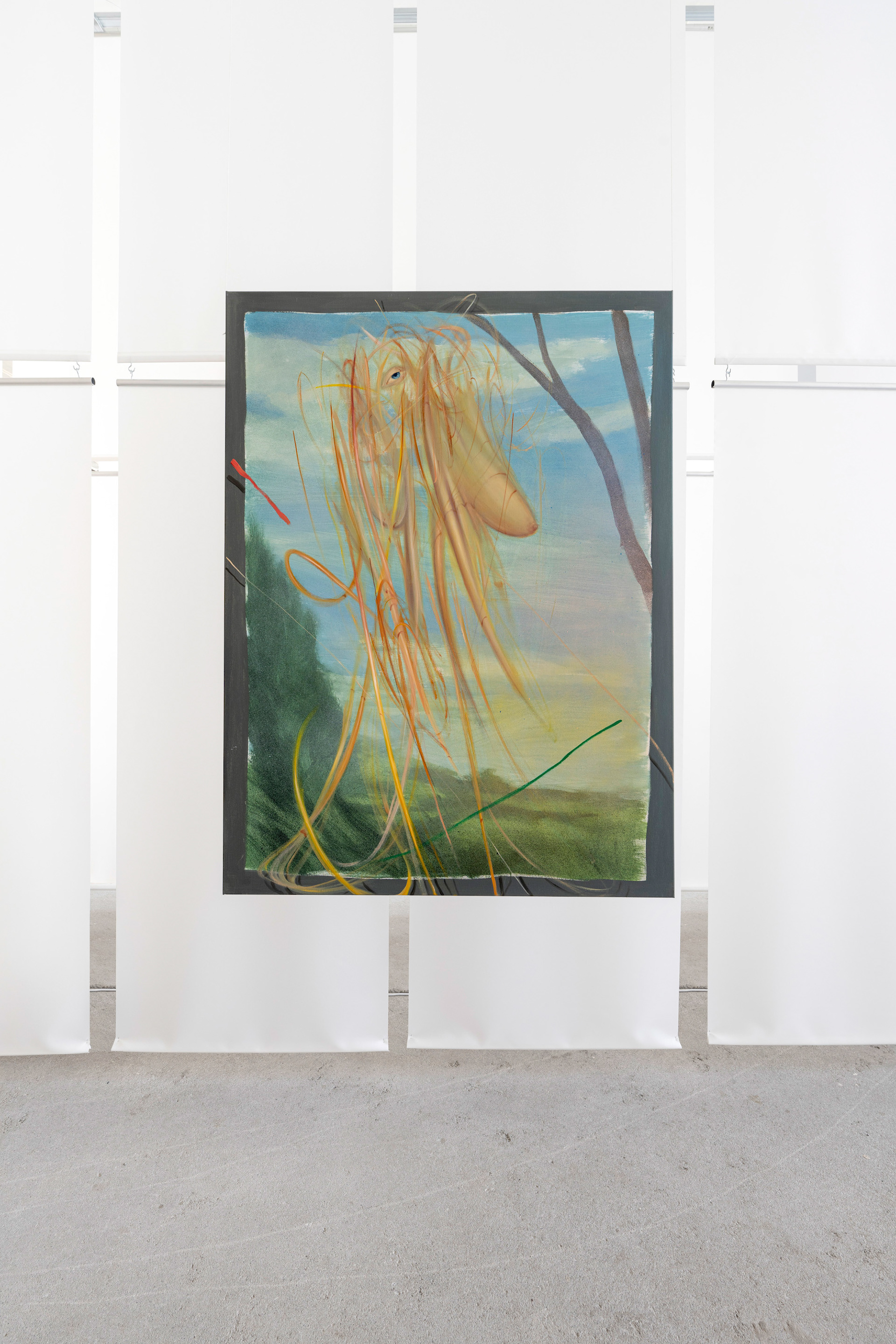
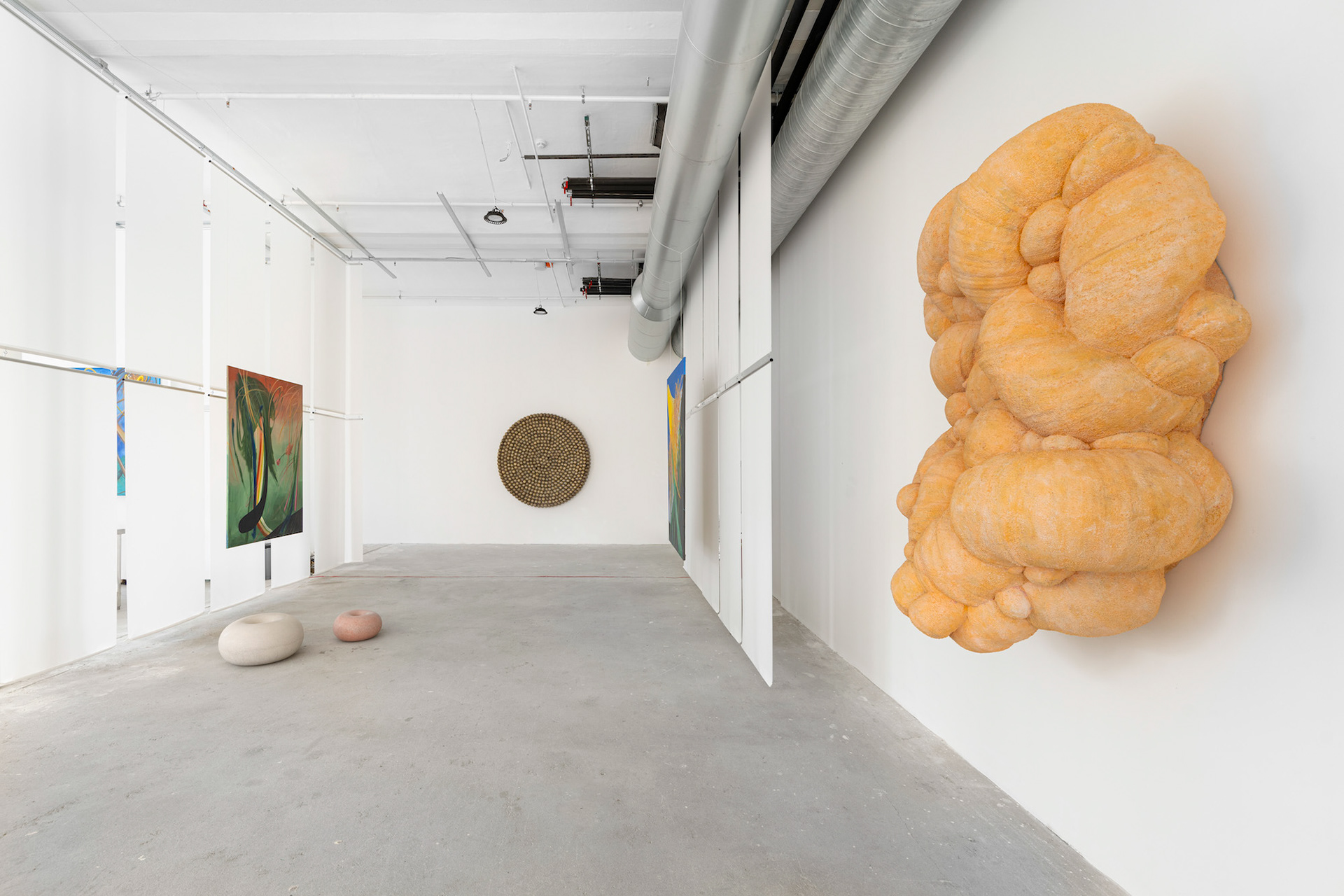
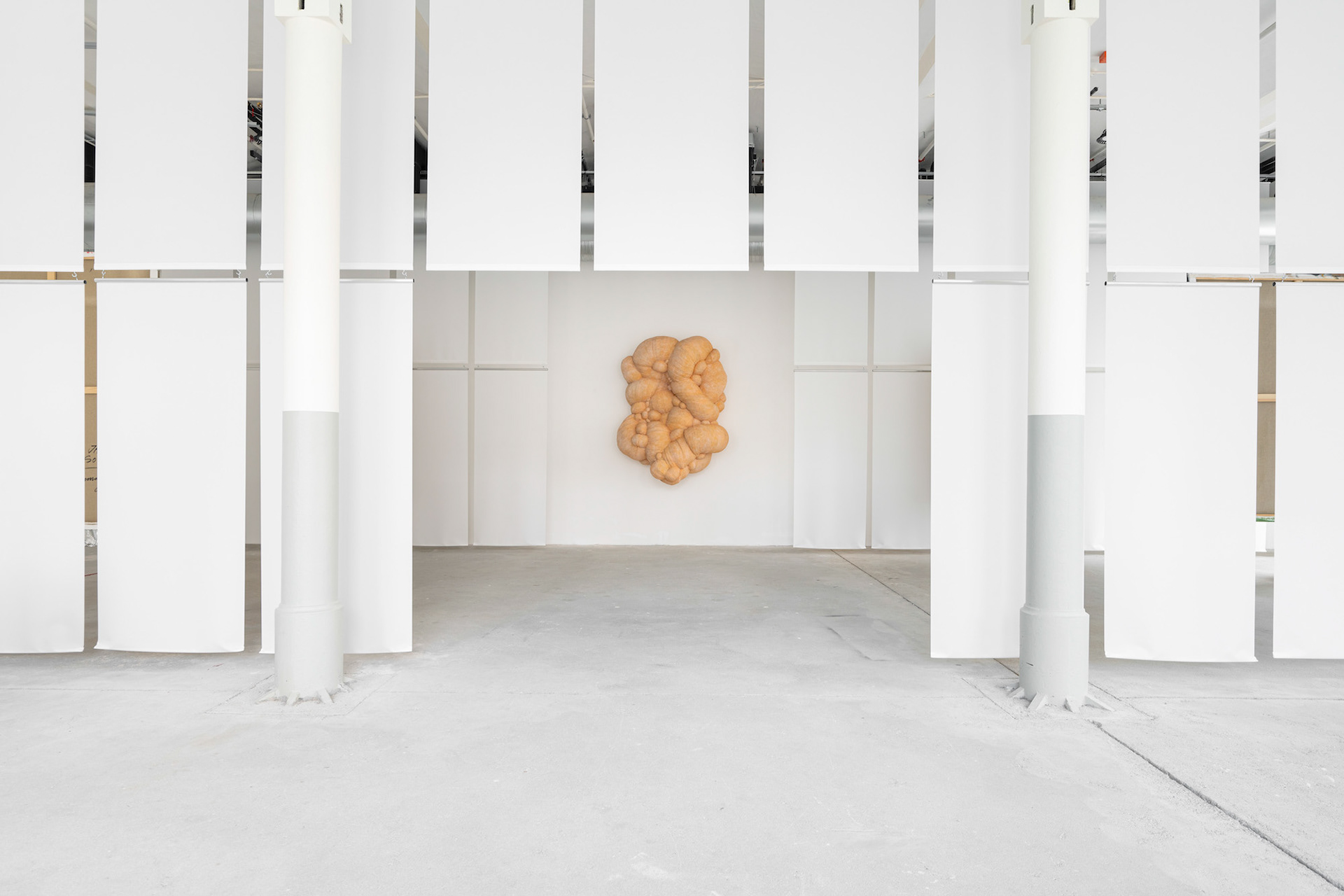
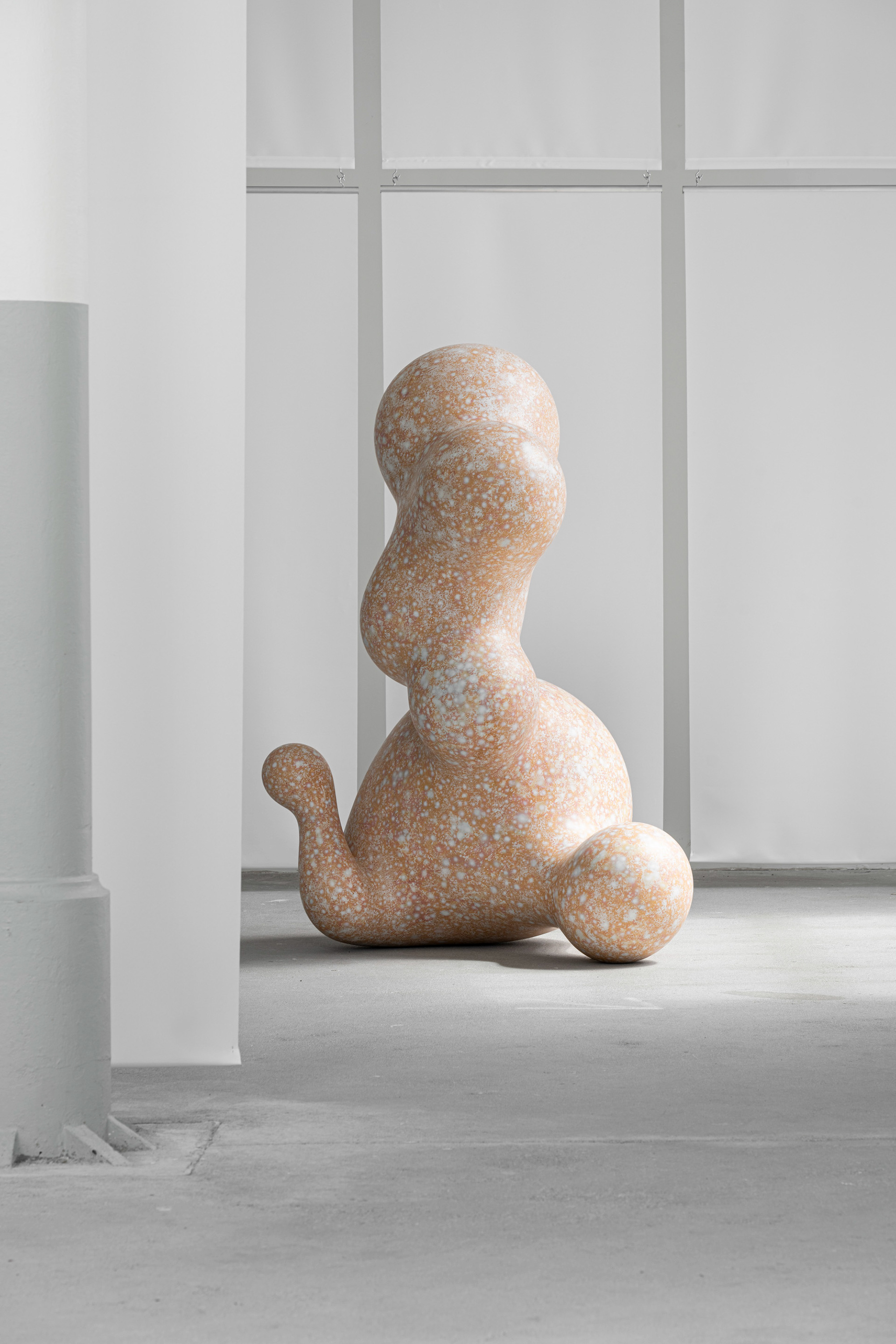


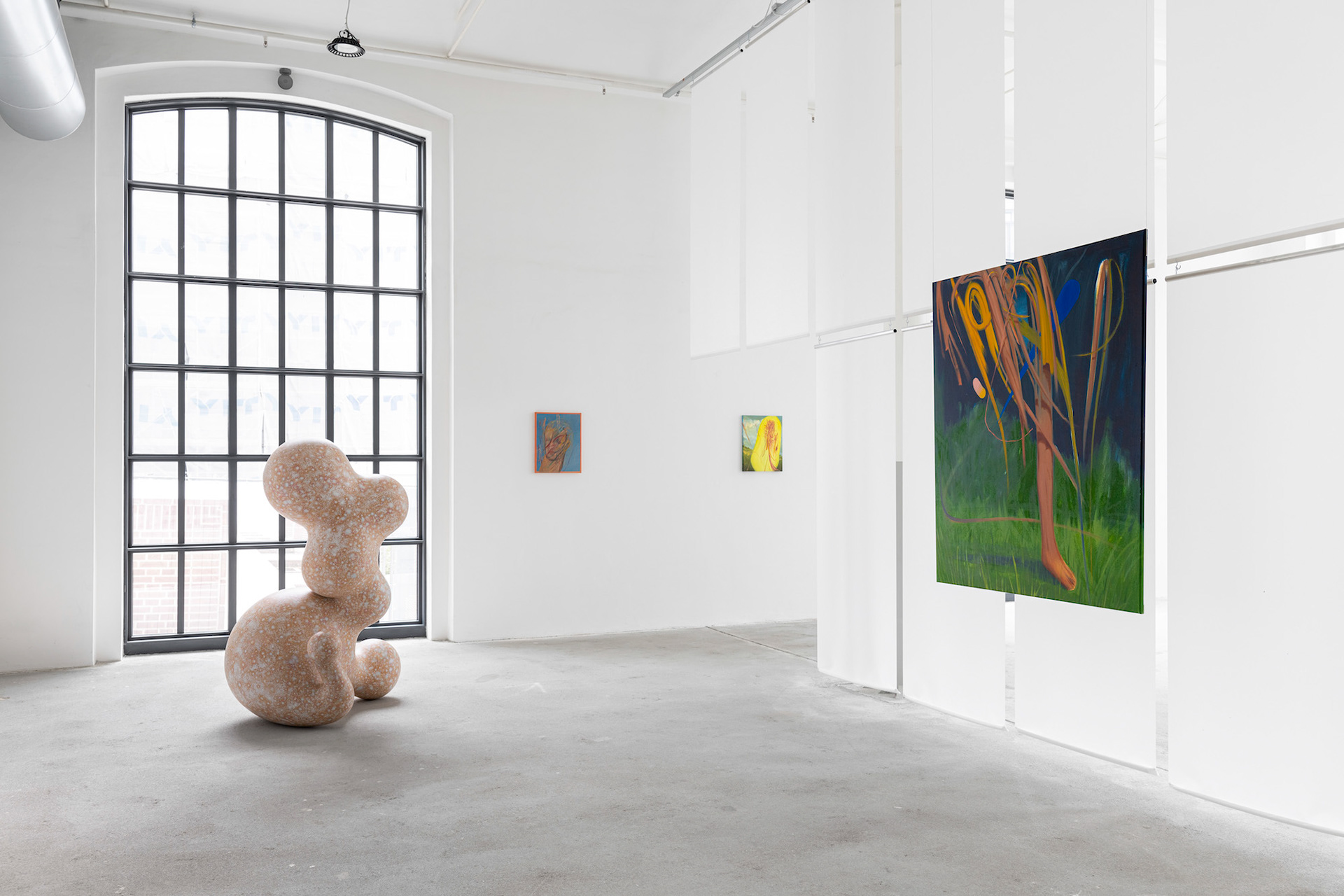
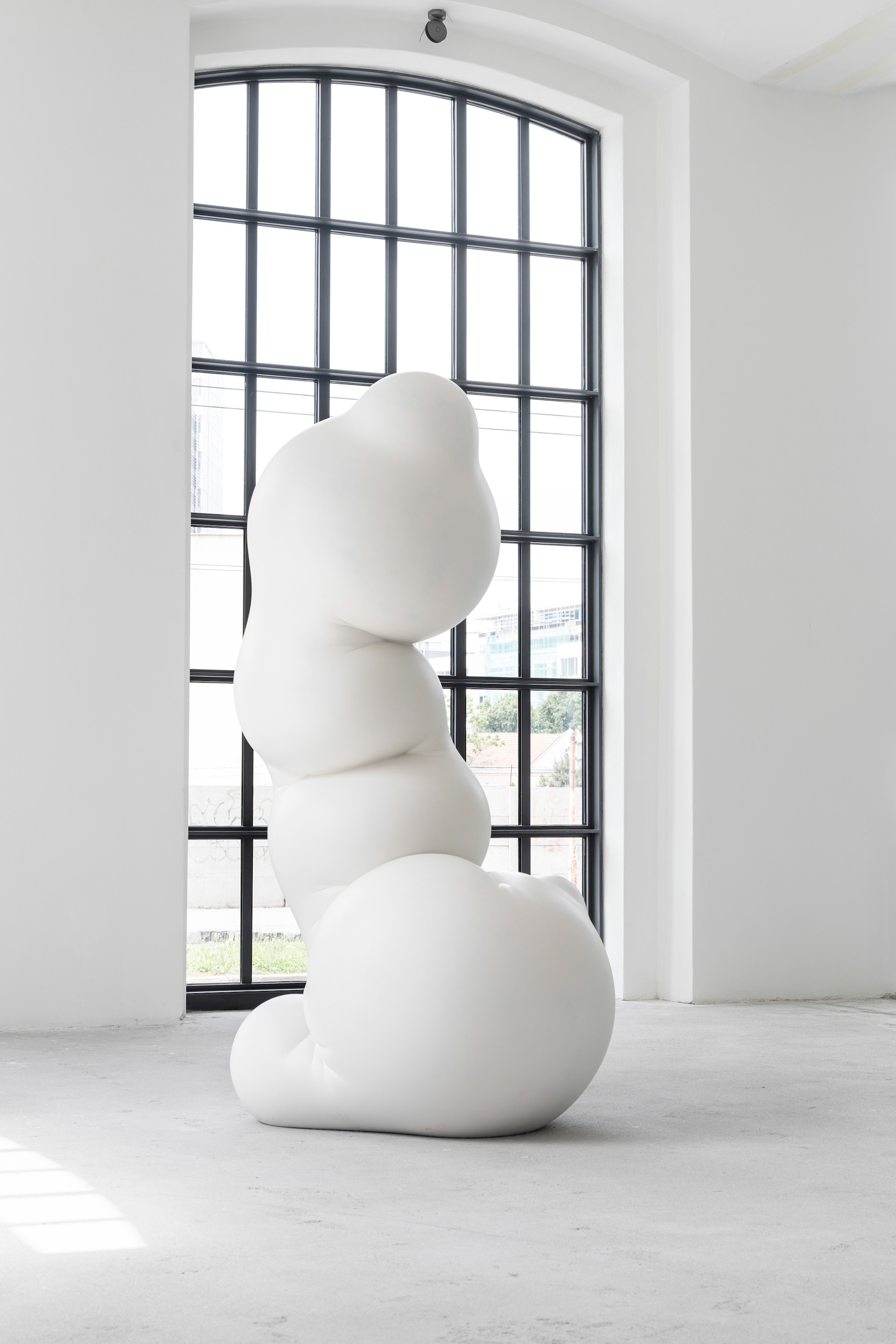
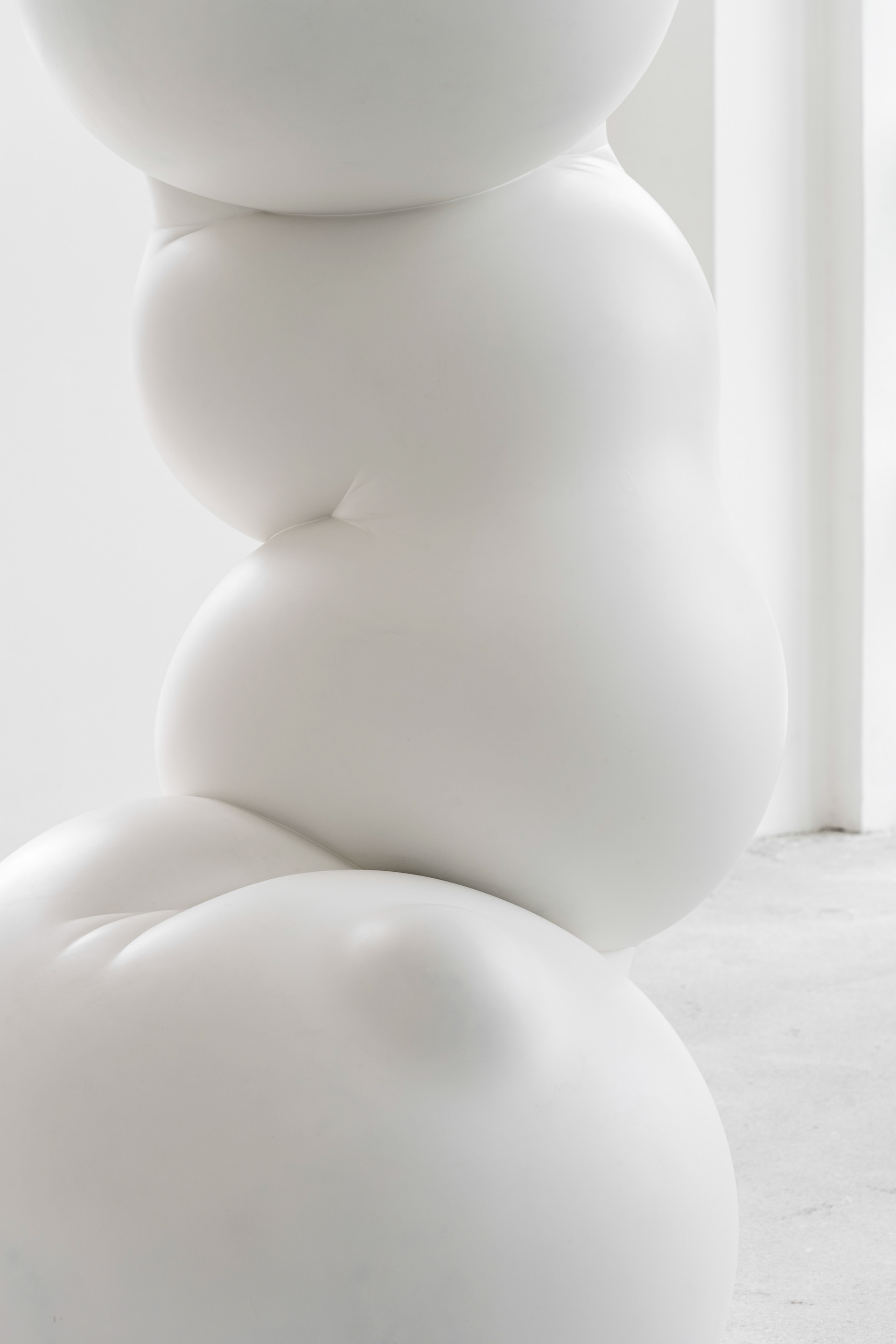

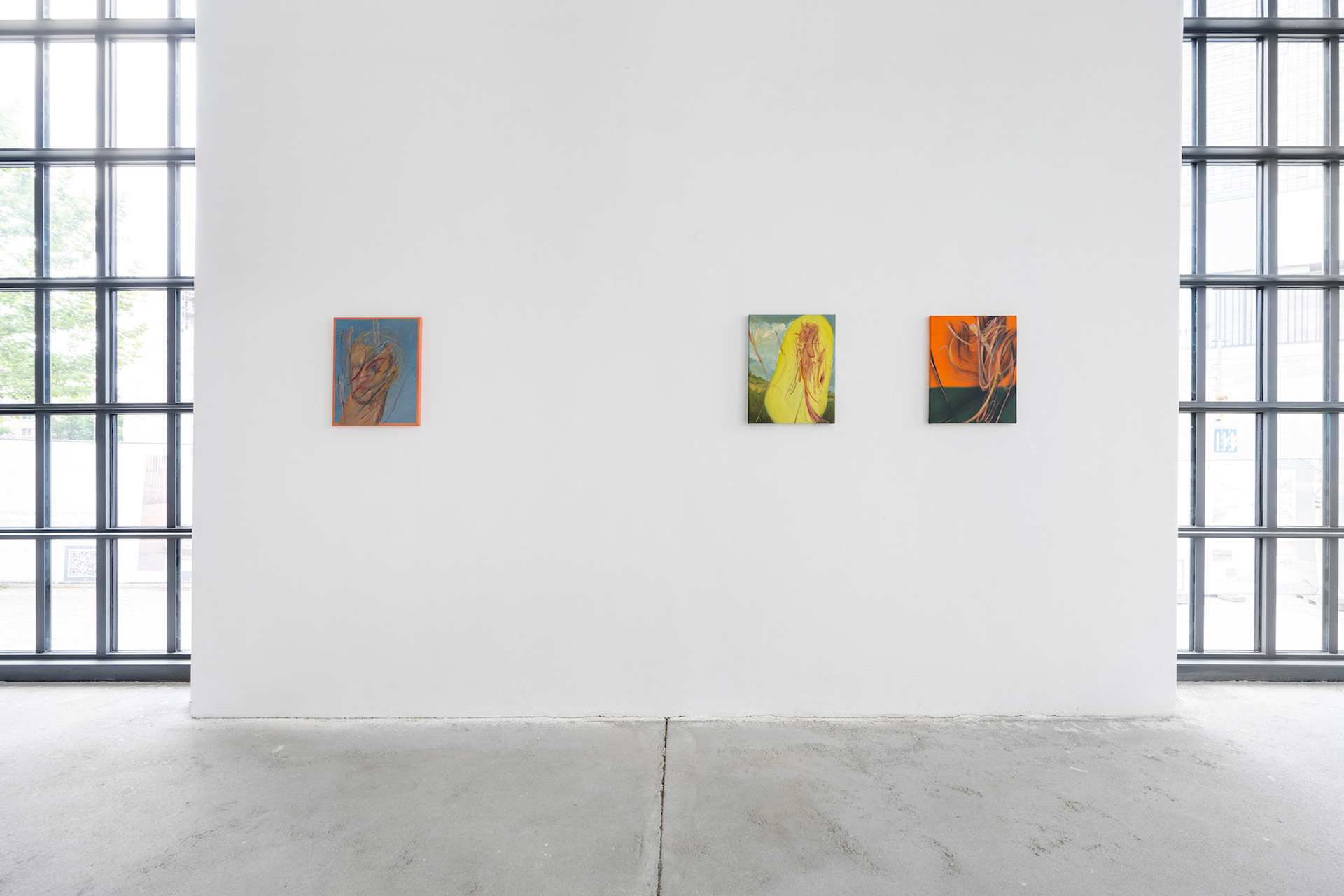
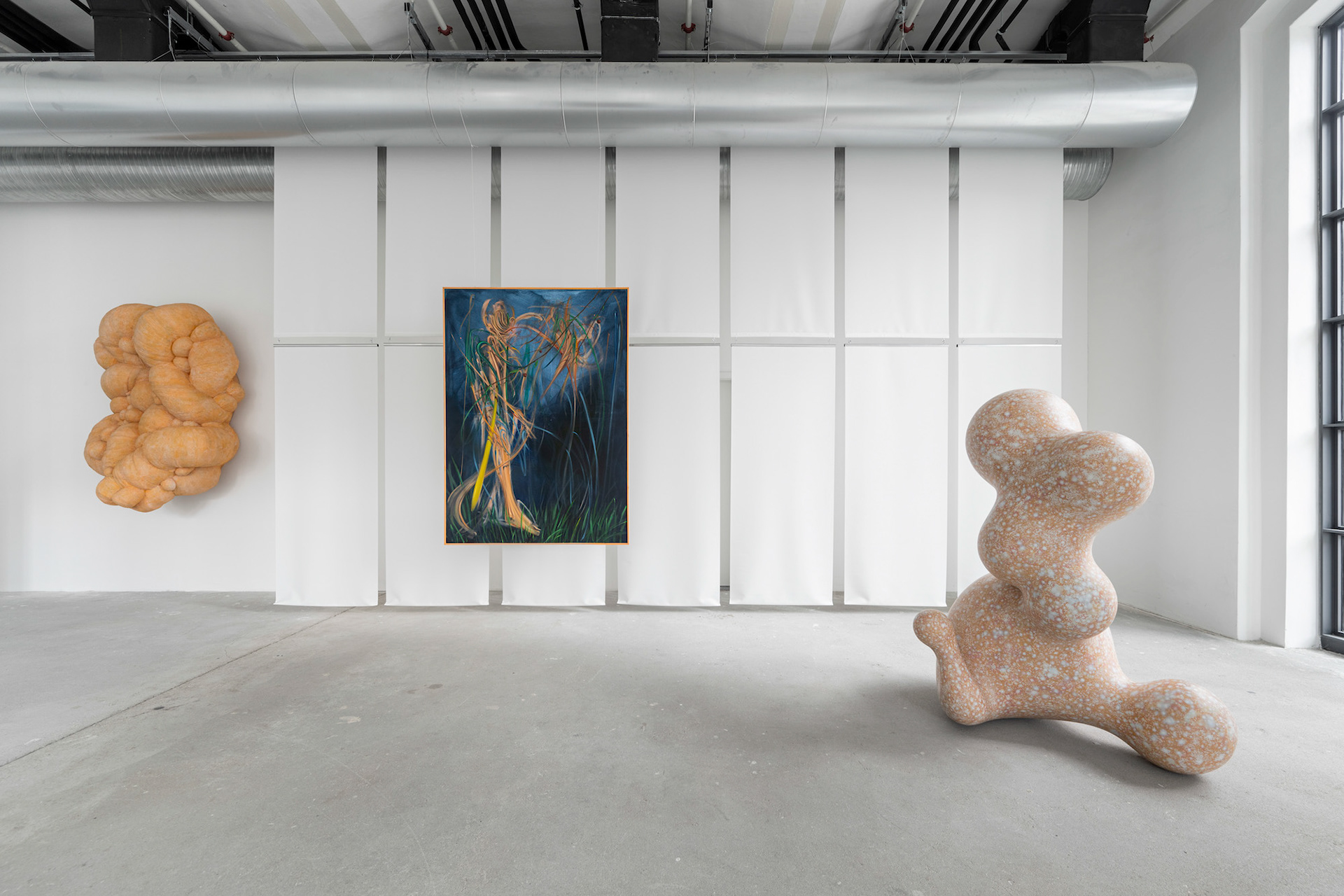
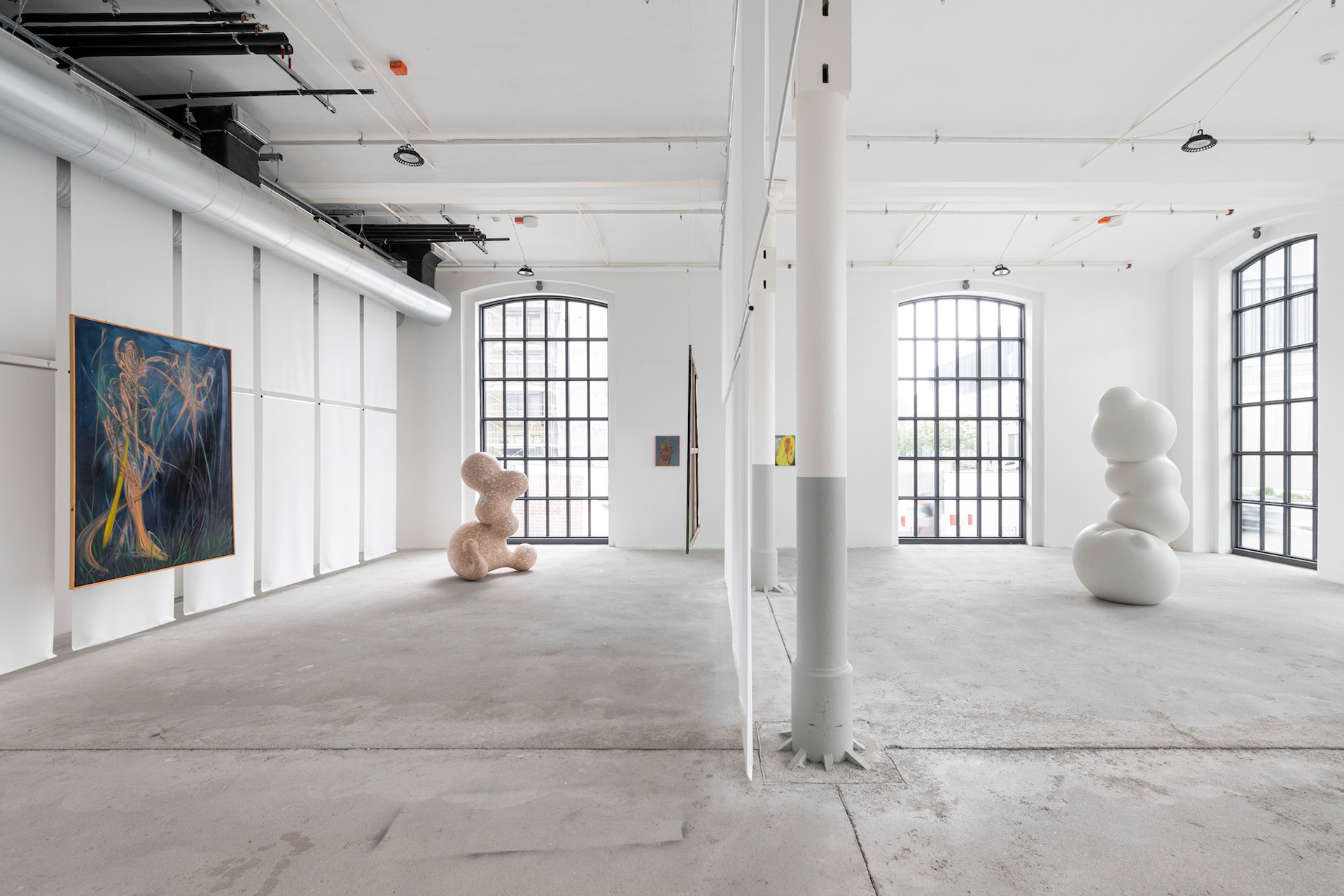



Physical cases break up into clusters of expressive elements flying across dimensions. Stable and concrete becomes dynamic and abstract. Uncontrolled bubbling sets into solid shapes, and endless experiments materialise into imaginative objects of indistinct purpose and origin. Forms, structures or states change, develop and transform. They lie with their bodies, imitate and appropriate their surroundings. They are close to organic shapes and nature; yet, with one foot, they also exist in the spaces of digitisation and technology. Everything changes and nothing lasts forever.
The exhibition The Impermanence of Being represents the first collaboration between Czech authors Jan Kovářík and Jan Soumar. It follows the dialogue between surface and space, figurative narrative and abstraction, or painting and object. Though each of the two visual artists work with different media and use different approaches, they converge in the ideas of transformation and are inspired by natural elements. Both are close to visual expression that is not loud, yet attracts attention. Continuous metamorphoses communicate directly – on a material or visual level, whilst also responding to symbolic transformations that move the works to more universal and associative levels. Penetration of the distinctive author's programmes also arises in the depiction of movement or continuous development. On the one hand, we detect glimpses of figures or the remains of the tangible world in a kind of airy vortices caught in hints of natural scenery. On the other hand, continuous transformation embodied in solid structures ensues, frozen in a unique moment. The inimitable union of the authors highlights the principles of vital development, change and movement, being a tribute to nature and freedom. It communicates the possibilities of psychological action of forms triggering imaginative processes.
The distinctive artistic expression of the Czech sculptor Jan Kovářík is a combination of different technological methods, experiments, as well as a result of chance. His original new creations are bound to draw attention. Yet, the process of creation matters in itself, when the traditional sculptural craft is combined with unconventional experimentations from other disciplines. Kovářík alternates perfectly clean and minimalist shapes with organic and raw structures. He works with laminates, artificial stone, acrystal, epoxy, along with plaster, or with found material and recycled waste. He complements the resultant forms with colour and drawing, thus supporting or, on the contrary, imitating the structures and textures of the surfaces. It is sometimes impossible to understand the principles, materials or shapes: he thus inspires a haptic experience. The selection presents Kovářík's varied morphologies, as well as the typology of sculptures, whilst focusing on free-standing and hanging works.
In his latest works, the Czech painter Jan Soumar continues to break down figural compositions, which he embeds in hints of non-specific natural scenery or simple coloured surfaces. On oil and acrylic canvases, he offers body fragments created by gestural brushstrokes. He alternates relaxed handwriting with realistic parts, thereby achieving a dreamy, at times romantic atmosphere anchored in dynamic movement. The gradual visual defragmentation brings about a thin border between abstract and figurative painting that lends space for one's own analysis and interpretations.
Fyzické schránky sa rozpadajú na zhluky expresívnych elementov poletujúcich naprieč dimenziami. Stabilné a konkrétne sa stáva dynamickým a abstraktným. Nekontrolované bublanie tuhne do pevných tvarov a nekončiace sa experimenty sa zhmotňujú do imaginatívnych objektov nejasnej funkcie a pôvodu. Formy, štruktúry či skupenstvá sa menia, vyvíjajú a transformujú. Klamú telom, napodobňujú a privlastňujú si svoje okolie. Majú blízko k organickým tvarom a prírode, no jednou nohou existujú v priestoroch digitalizácie a technológií. Všetko sa mení a nič netrvá večne.
Výstava Nestálosť bytia predstavuje premiérové spojenie českých autorov Jana Kováříka a Jana Soumara a sleduje dialóg medzi plochou a priestorom, figurálnym naratívom a abstrakciou či maľbou a objektom. Hoci sa obaja vizuálni umelci venujú odlišným médiám a využívajú rôzne prístupy, stretávajú sa v ideách premeny, inšpirujú sa prírodnými elementmi a majú blízko k vizuálnej expresii, ktorá síce nekričí, ale priťahuje pozornosť. Kontinuálne metamorfózy komunikujú priamo – v materiálnej či vizuálnej rovine, ale takisto reagujú na symbolické premeny, ktoré posúvajú diela do univerzálnejších a asociačných rovín. Prienik osobitých autorských programov nastáva aj v zobrazení pohybu či ustavičného vývinu. Na jednej strane sledujeme záblesky figúr či pozostatky hmatateľného sveta v akýchsi vzdušných víroch zachytených v náznakoch prírodných scenérií a na druhej strane súvislý transformačný proces stelesnený v pevných štruktúrach, ktoré zamrzli v jedinečnom momente. Unikátne prepojenie autorov zdôrazňuje princípy nutného vývoja, zmeny a pohybu, je poctou prírode a slobode a komunikuje možnosti psychologického pôsobenia foriem spúšťajúceho imaginatívne procesy.
Jedinečný umelecký prejav českého sochára Jana Kováříka je kombináciou rôznych technologických postupov, experimentov, ale aj výsledkom náhody. A hoci zaujmú hlavne jeho originálne novotvary, dôležitý je samotný proces vzniku, v ktorom sa spája tradičné sochárske remeslo s nevšednými pokusmi z iných odvetí. Dokonalo čisté a minimalistické tvary autor strieda s organickými a surovými štruktúrami. Pracuje s laminátmi, umelým kameňom, acrystalom, epoxidom, ale aj so sadrou či nájdeným materiálom a recyklovaným odpadom. Výsledné formy dopĺňa farbou a kresbou, a tak podporuje alebo, naopak, imituje štruktúry a textúry povrchov. Pochopiť princípy, materiály či tvary je miestami nemožné, čím vyzýva k haptickej skúsenosti. Výber prezentuje Kováříkove rozmanité tvaroslovie, ako aj typológiu sôch, pričom sa sústreďuje ako na voľne stojace, tak aj závesné diela.
Vo svojich najnovších prácach český maliar Jan Soumar pokračuje v rozklade figurálnych kompozícií, ktoré vkladá do náznakov nekonkrétnych prírodných scenérií či jednoduchých farebných plôch. Na olejových a akrylových plátnach ponúka telesné fragmenty vytvorené gestickými ťahmi štetcami. Strieda uvoľnený rukopis s realistickými časťami, čím docieľuje snovú, miestami romantizujúcu atmosféru ukotvenú v dynamickom pohybe. Výsledkom postupnej vizuálnej defragmentácie je tenká hranica medzi abstraktnou a figurálnou maľbou, ktorá dáva priestor na vlastnú analýzu a interpretácie.
